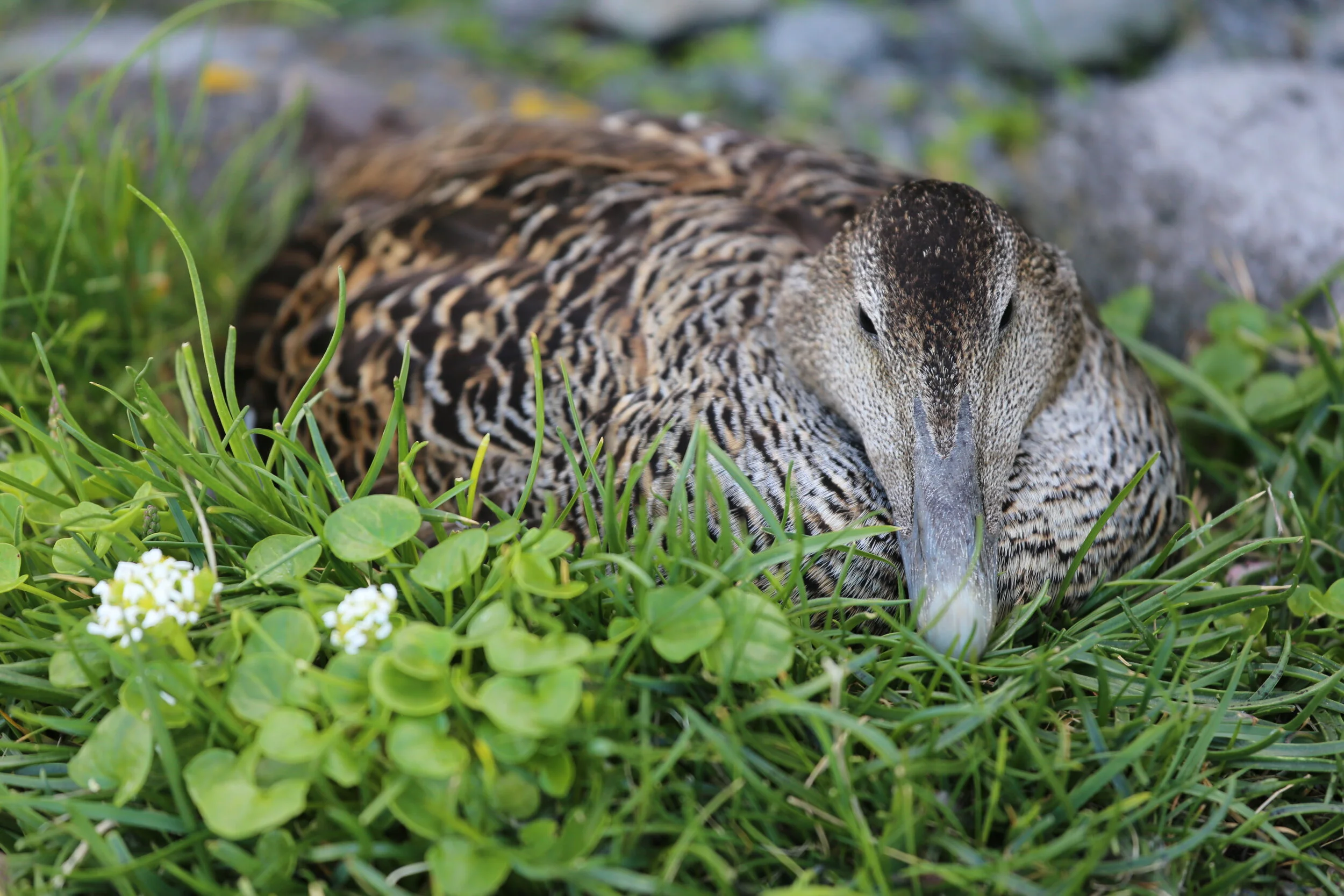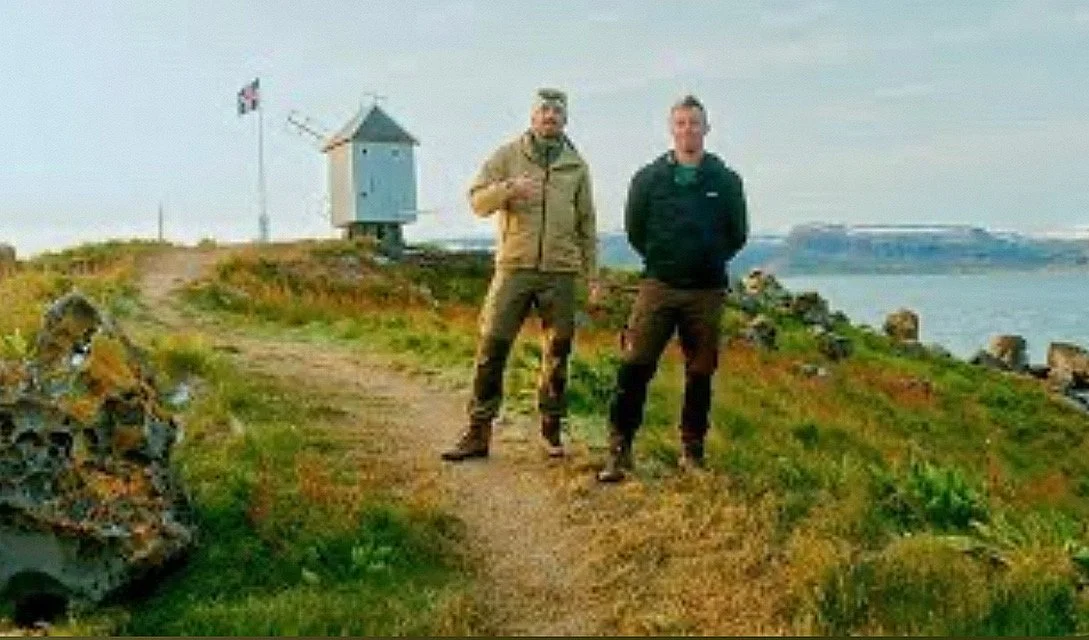
An Arctic Paradise
Vigur is a slice of northern perfection in a far-flung corner of Iceland’s remote Westfjords - just south of the Arctic Circle. The island has a history stretching from the original settlement of Iceland and first appears in the written record as far back as the 11th Century. During much of that time Vigur has been a place of cultural influence for the surrounding fjord region and rich in natural resources. It is now a beloved capsule of Icelandic heritage - particularly the uniquely Icelandic tradition of eiderdown farming - and a vital sanctuary for a stunning array of Arctic birdlife.
Iceland’s only windmill, its oldest working boat and some of its oldest buildings can be found on Vigur. Designated an ‘internationally important seabird habitat’, some 7000 breeding Eider Ducks, 100,000 puffins, Europe’s largest colony of Black Guillemot and more nesting Arctic Terns than anyone can count can be seen on Vigur from April to August. A seal colony thrives on the southern end of the island and increasing numbers of whales visit the fjord every year which can be easily spotted from Vigur’s shores.
The main occupation of the island farm is collecting and cleaning the soft down left behind by wild eider ducks in their nests, which is a valuable insulation material used in many products ranging from bedding and clothing to the sleeping bags of polar explorers.
There is now only one family that lives on Vigur. They own the island and call it home year-round. As a heritage farm and nature reserve, conservation of both the history and the wildlife of the island are now the main priority on Vigur, with preservation, research and outreach supported by the Vigur Island Foundation.
Member of the Small Islands Organisation since 2025
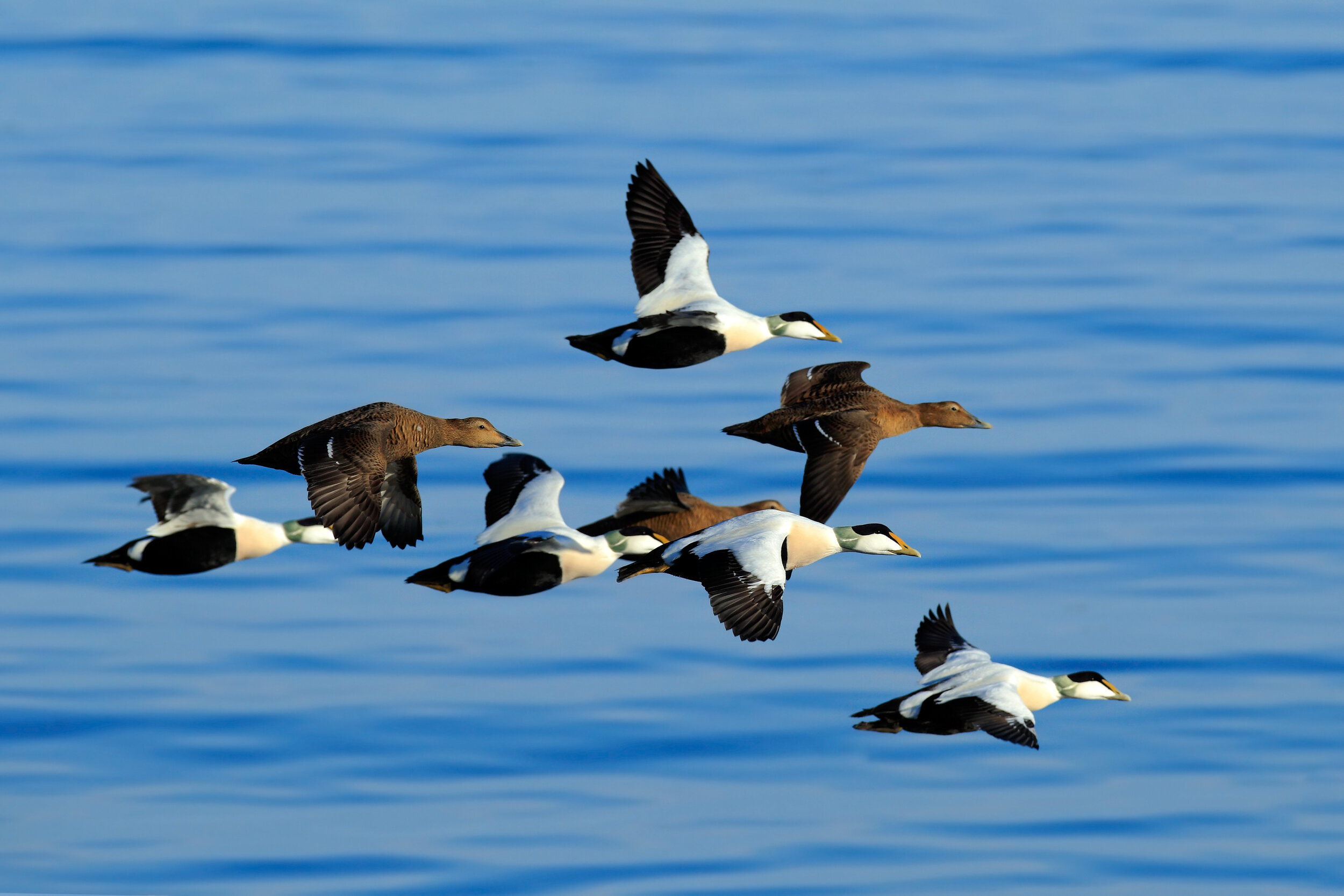
Eider Ducks
Vigur is famous for its eiderdown, the soft under-feathers of the Common Eider. Every summer more than 3500 eider nests appear all over the island, each insulated with eiderdown that is shed naturally. The eiderdown is still collected in exactly the same way it has been for centuries. Once cleaned by hand, it is sold for use in luxurious duvets and pillows as well as jackets and sleeping bags for explorers and mountaineers - and even the suits of astronauts. What makes eiderdown so valuable is not just its extraordinary insulating properties but also its rarity. Only 3 tons of eiderdown is collected globally per year (enough for just 3000 double duvets) and as much as 85% of that comes from Iceland.
Icelandic eider farming is unique in its sustainability and relationship with nature. The wild ducks flock to Vigur because the island farming family affords them protection by deterring predators (simply by being present) and creating an eider idyl. Common Eider tend to return to the place they were hatched to breed, so a higher survival rate of chicks translates into more nests and more down. The farmer also benefits from a greater number of nests concentrated in a small area which makes collection of the down more efficient.
Icelandic eiderdown farming is a rare example of man and nature working in harmony for mutual benefit.
Visit Us
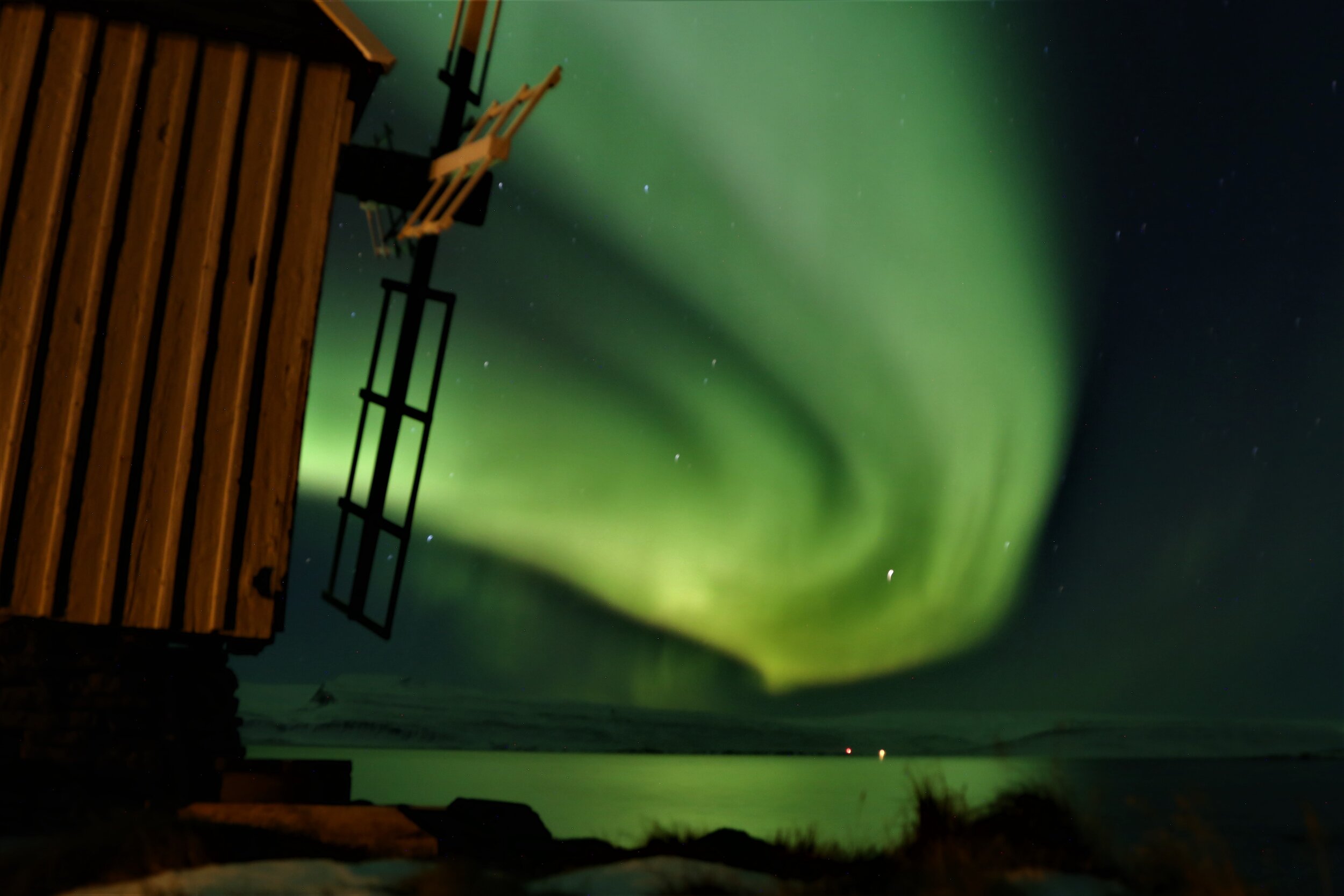
A Family Farm
The current family of Vigur are Gísli, Felicity and their son, Þráinn Freyr, who together look after the island year-round with their fraendi, Spencer. Gisli is originally from Reykjavik while Felicity is a native of the UK. Both Felicity and Gísli have spent most of their lives traveling in the Polar regions; Felicity on skis and Gísli in specialized vehicles. Vigur is their joint passion and they are determined to ensure the future of the island as a valued national treasure.
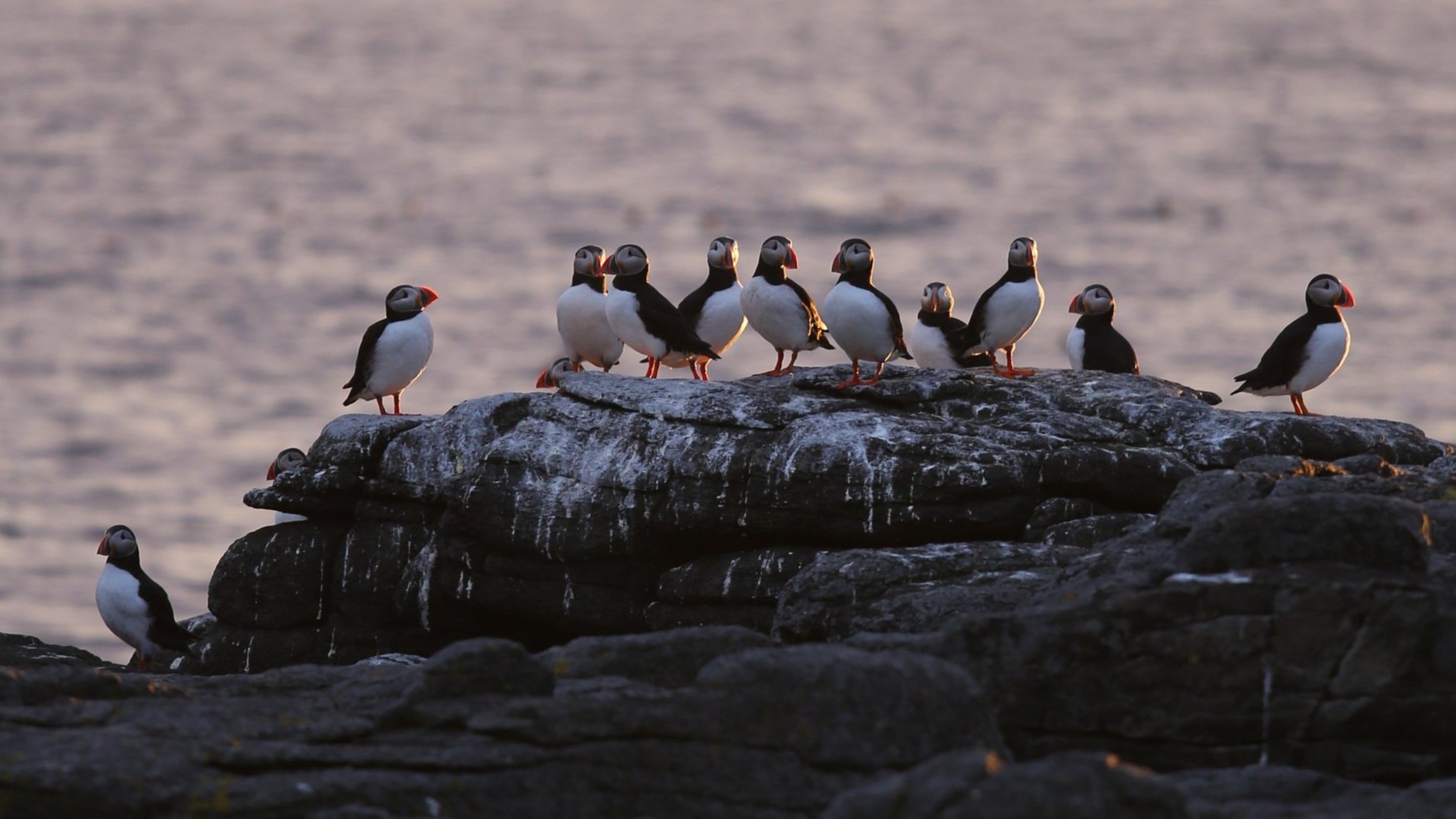
Stories from Vigur
Geographical Magazine
Click on the image above to read the feature article about life on Vigur which appeared in Geographical Magazine in March 2021.
Geographical Podcast
To accompany her feature article published in the March 2021 issue of the magazine, Felicity takes part in this episode of the Geographical Podcast about her life on Vigur (starts at approx 23 minutes in)…
Gone Feral UK
Gone Feral, SEASON 3 joins a team of seabird researchers on a Puffin rally around Iceland! Using our wildlife photography skills, we captured images of Puffins in flight, to help the researchers determine what prey the Puffins were eating! For the role we happily accepted our job title for the next fortnight - ' The PUFFARAZZI ’. Join us as we visit the wonderful island of Vigur.
forbes
Forbes Journalist, Anna Haines, visits Vigur as part of the annual Vid Djupid Music Festival as discusses in her feature article ‘Why This Icelandic Music Festival Should Be Your Next Wellness Retreat’…
French TV
French TV station TF1 Le JT came to visit Vigur in the summer of 2021 as part of a tour of the Westfjords and made this short film about it. (click on the image to watch)
BBC Natural History Unit
The second episode of this landmark wildlife series focuses on parenthood in the natural world and features a segment on eider ducks filmed on Vigur (subscription necessary to view).
Lonely Planet
Asa Steinars explores the Westfjords for Lonely Planet and visits Vigur (around 7 minutes into the film).
The Daily Mail
Click on the image above to read the article in the Daily Mail about the island family and how they came to be the owners, inhabitants and farmers of Vigur…
Lindblad Expeditions - National Geographic
After falling in love with Vigur Island while bringing travelers there on expedition eight years ago, renowned polar explorer Felicity Aston decided to buy it. Today, she and her husband oversee the annual eiderdown harvesting which Vigur is known for, as well as its charming cafe where you can enjoy a slice of traditional Icelandic rhubarb cake known as Hjónabandssæla. In this episode of Expedition Spotlight, Aston welcomes you to her home, a tiny Icelandic haven for thousands of puffins, arctic terns, and eider ducks.
RUV - Landinn
Icelandic TV comes to Vigur to ask what it is like to live on such an island in wintertime (report in Icelandic).
National Georgraphic Explorer
The expedition ship, National Geographic Explorer, regularly visits Vigur and made this short video to explain what makes the birdlife on the island so special.
Rurik Gislason
Model and Influencer, Rurik Gislason, is lost for words after his day on Vigur…
Renewable matter
Italian lecturer in sustainability Francesco Cara spent a week in June on Vigur helping us with the collection of the eiderdown. Here is his article in Renewable Matter (available in Italian and English) about the almost uniquely Icelandic tradition.




